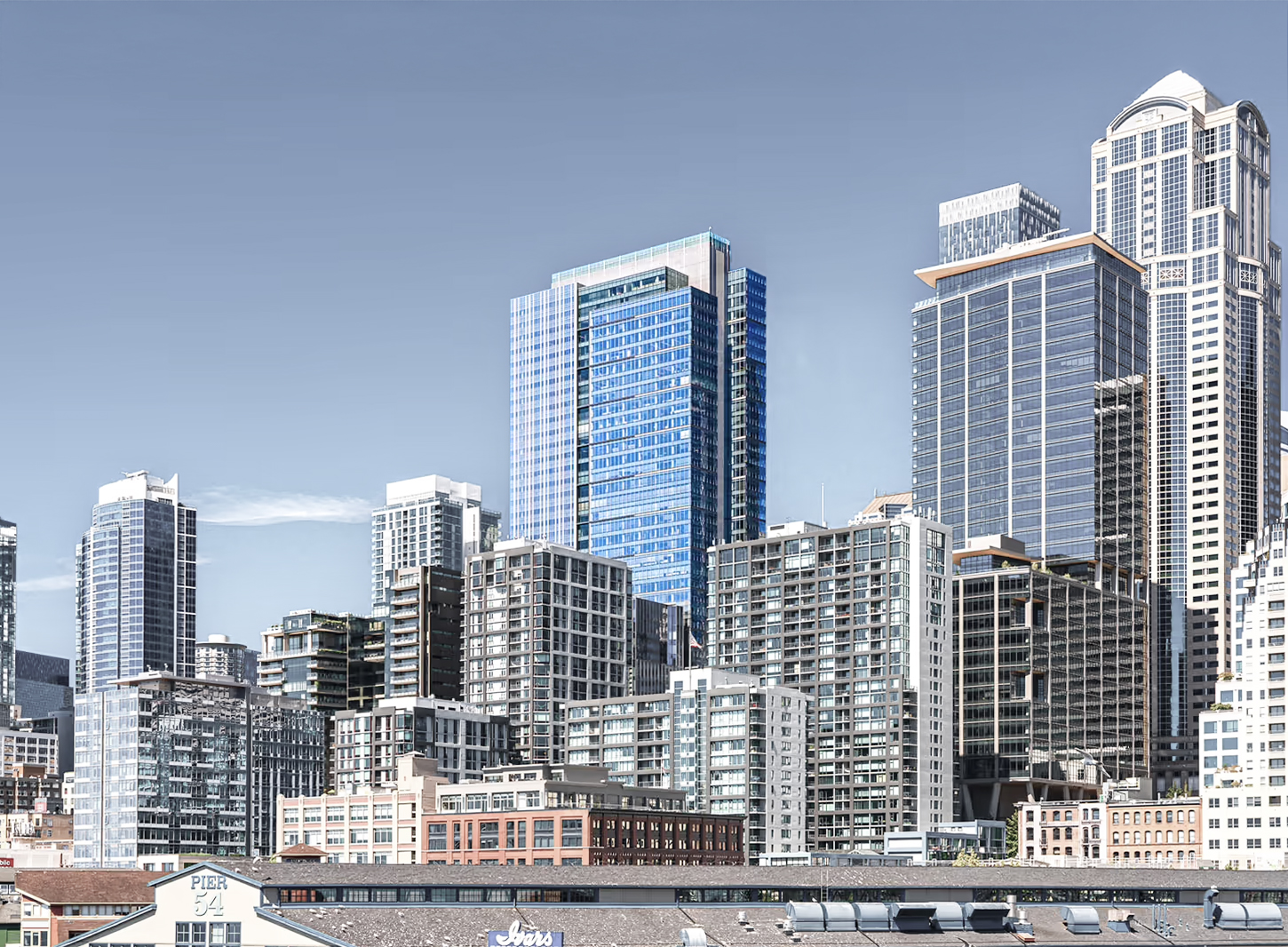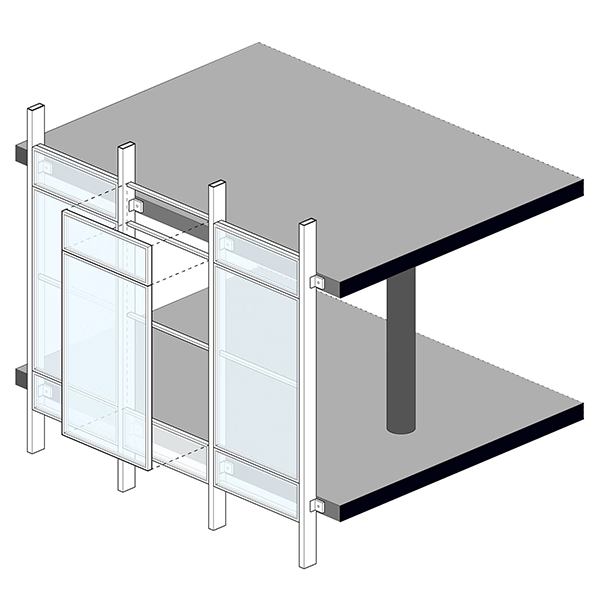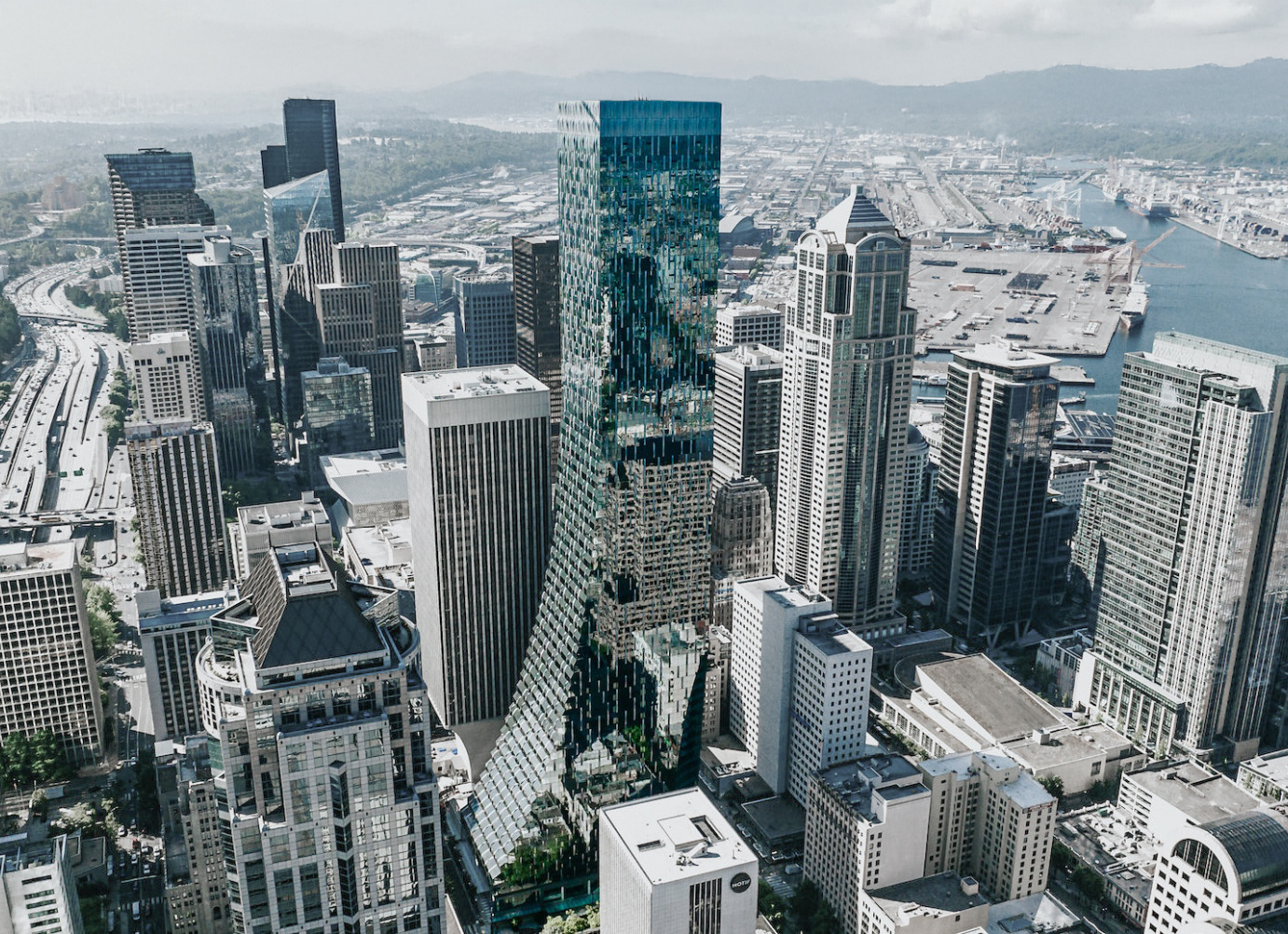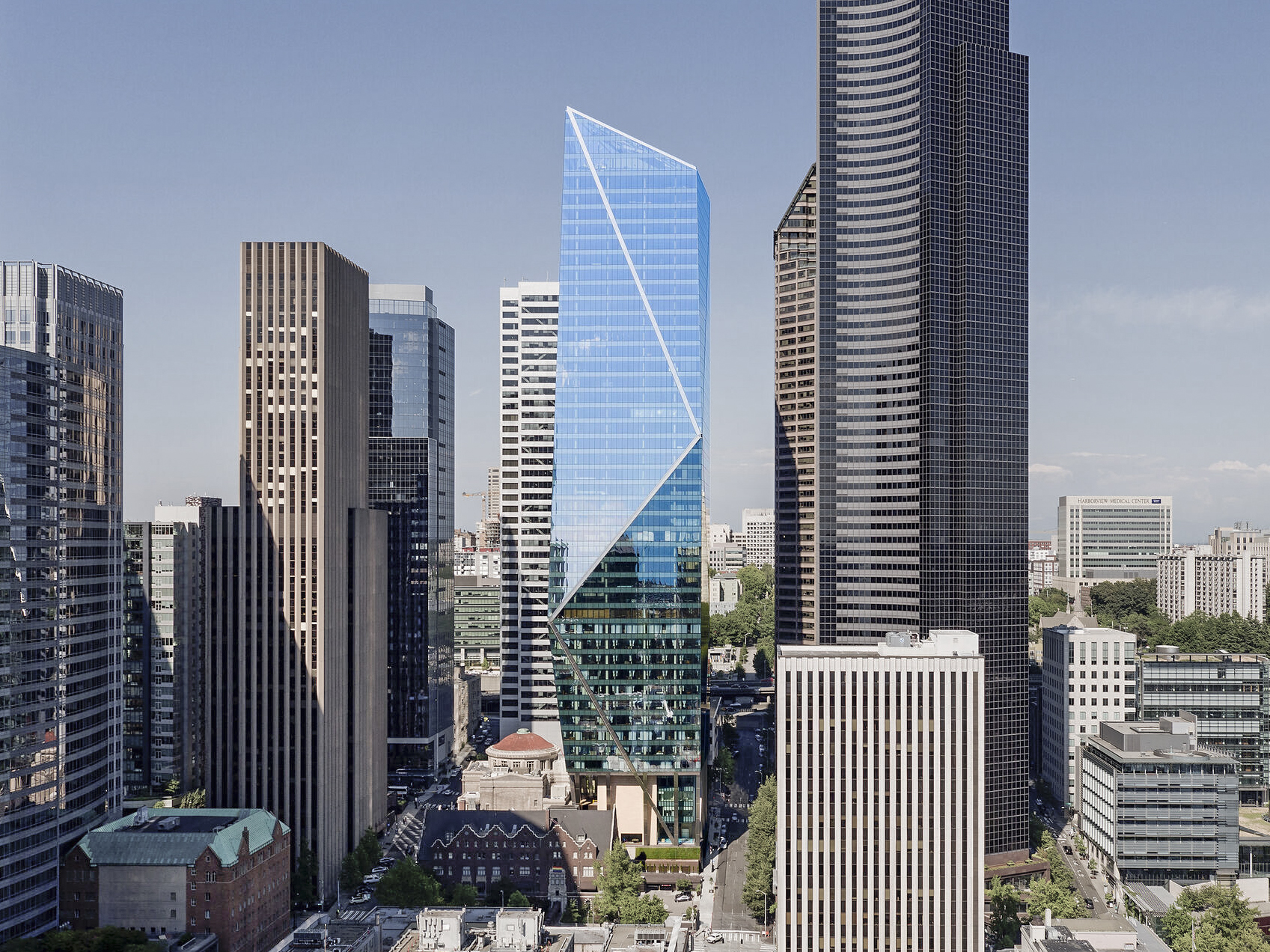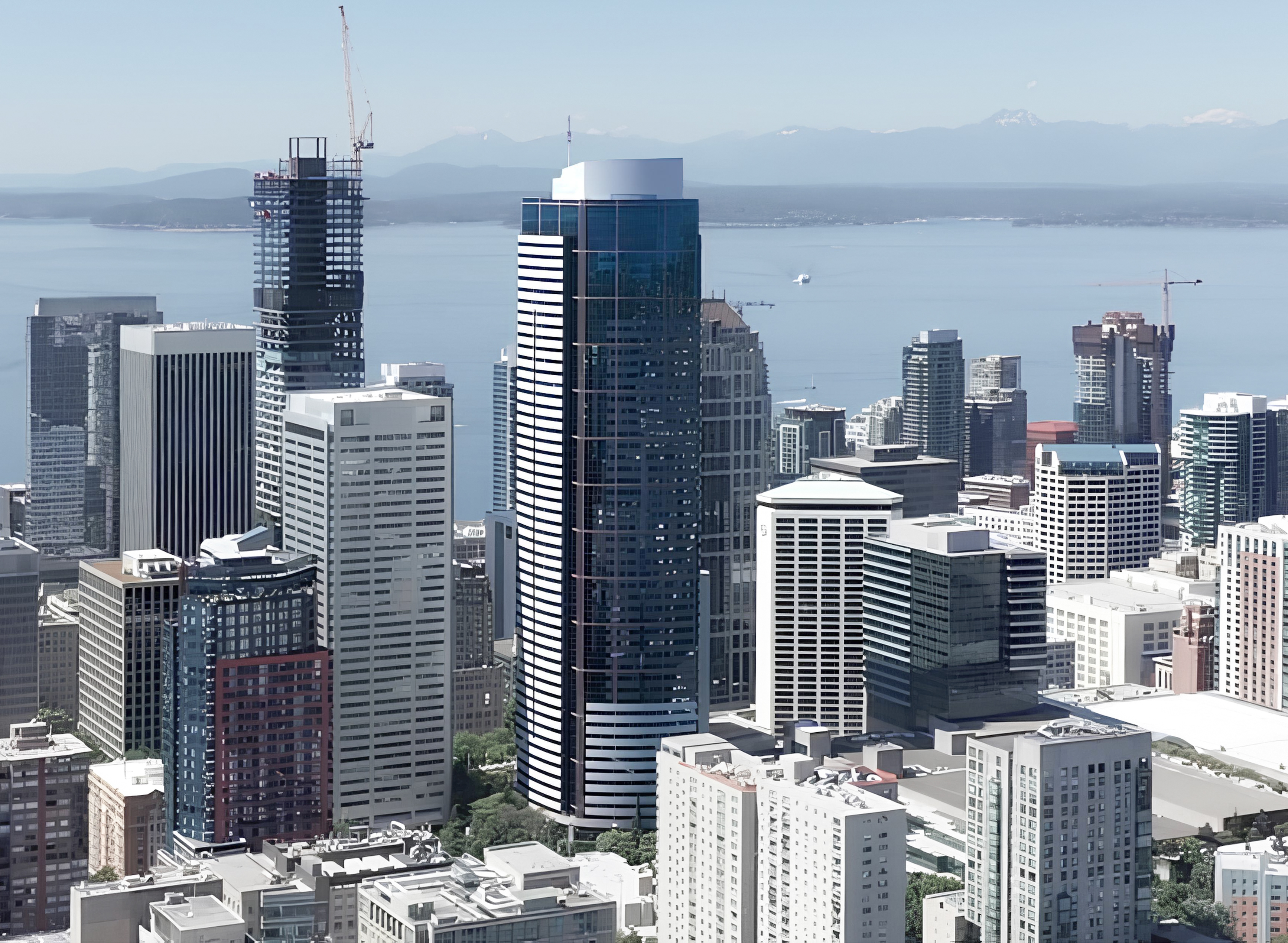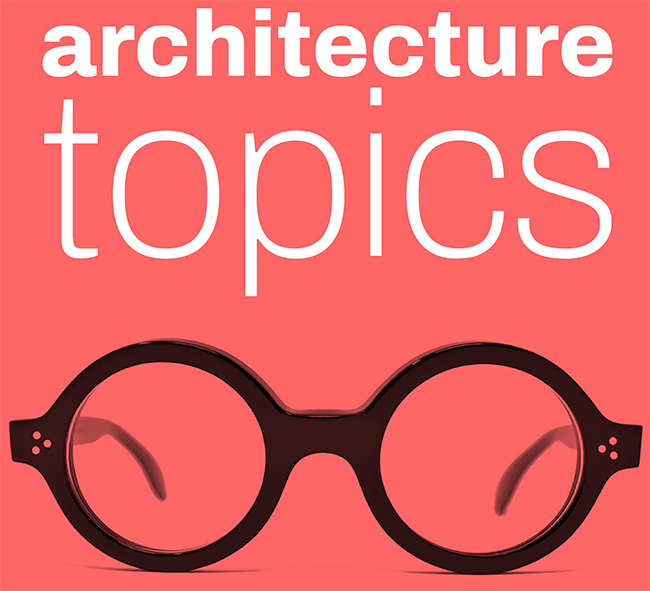The Russell Investments Center is a Contemporary skyscraper designed in 2003 by NBBJ, and built between 2004 and 2006, for a reported $370 million dollars, in Seattle, WA.
Russell Investments Center is not the only name you might know this building by though. It is common for companies to want to attach their names to iconic buildings when they move in, or for the general public to come up with nicknames, and this one is no exception. The building has changed names several times over the years, and is also known as:
- WaMu Center between 2006 and 2008.
- Chase Center between 2009 and 2009.
- Russell Investments Center from 2009 until this day.
Its precise street address is 1301 2nd Avenue, Seattle, WA. You can also find it on the map here.
In 2007 the Russell Investments Center was awarded with the Honor Award recipient from the American Society of Landscape Architects.
